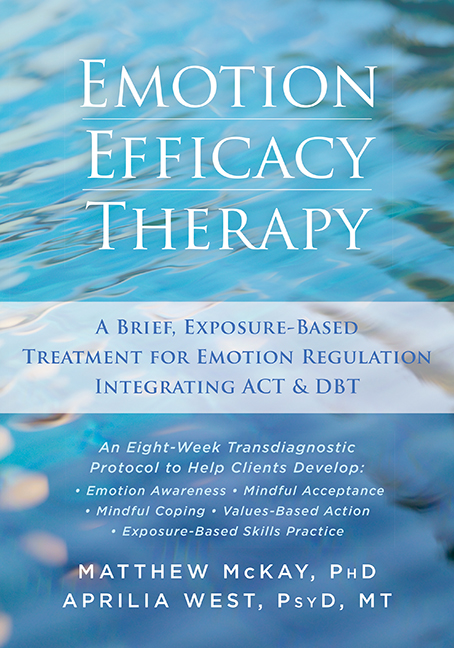Part three of a four-part series on emotion efficacy therapy
Read part one here and part two here.
By Matthew McKay, PhD, and Aprilia West, PsyD
Values-based action is a component of emotion efficacy therapy (EET) that helps clients recognize the moment of choice that occurs when they are emotionally triggered. Using this process, clients can learn to choose values-based behavior over emotion-driven urges. For values-based action, we use a different exposure following mindful acceptance and emotion surfing (read parts one and two), which takes the client through an imaginary rehearsal of new alternatives to old, emotion-driven behaviors.
In EET, we use imaginal exposure to help clients learn to use values-based action in an emotionally triggered state. During session, when clients report a recent distressing event, you can take them through the following six steps to learn how to use values-based action:
1. Identify where they were and what was happening when they became emotionally triggered. Determine which emotion-driven behaviors they used to cope with the pain.
2. Prompt clients to recognize which of their values relates to this situation. For example, they may endorse values of kindness, honesty, being supportive, taking care of themselves, etc. Once they identify a relevant value, have clients plan how they might have turned this value into action during the triggering event. Ask them to be very concrete about the values-based action, e.g., “What, exactly could you have said or done in the moment of choice?”
3. Have clients briefly visualize their values-based action, rehearsing the scene several times until they feel clear about what they want to do.
4. Begin imaginal exposure by having clients visualize the recent distressing event. Encourage them to notice the environment of the scene and their experience of it: where they were, what was said, what they felt in their body, as well as any action urges that occurred. As clients become emotionally activated, encourage them to describe any sensations, thoughts, feelings, or urges that occur now (mindful acceptance and emotion surfing). Encourage mindful acceptance. Help them observe and accept, or to “make room” for the painful emotion. Encourage them to notice the moment of choice—when they could choose to give in to the action urge (emotion-driven behavior) or not.
5. Add values-based action to the exposure. After emotion surfing, have the client rate their SUDS (Subjective Units of Distress Scale ranging from 0-10), then introduce a guided visualization where clients enact their values-based action. They will continue in the distressing scene, but instead of watching the emotion-driven behavior that accompanied the actual event, clients will visualize themselves enacting the values-based action they rehearsed in step 3, including appropriate tone of voice and posture, for three to five minutes. Take them through the sequence, from moment of choice to values-based action, several times. At the end, have client rate SUDS again.
6. Consolidate the experience by asking clients what they have learned about the target emotion, the moment of choice, and the workability of their new responses.
 Matthew McKay, PhD, is a professor at the Wright Institute in Berkeley, CA. He has authored and coauthored numerous books, including The Relaxation and Stress Reduction Workbook, Self-Esteem, Thoughts and Feelings, When Anger Hurts, and ACT on Life Not on Anger.
Matthew McKay, PhD, is a professor at the Wright Institute in Berkeley, CA. He has authored and coauthored numerous books, including The Relaxation and Stress Reduction Workbook, Self-Esteem, Thoughts and Feelings, When Anger Hurts, and ACT on Life Not on Anger.
Aprilia West, PsyD, MT, is a psychotherapist and emotion researcher based in the San Francisco Bay Area, where she specializes in treating anxiety disorders, mood disorders, and trauma.

 Why Journaling Is Especially Helpful to Adult Children of Emotionally Immature Parents
Why Journaling Is Especially Helpful to Adult Children of Emotionally Immature Parents